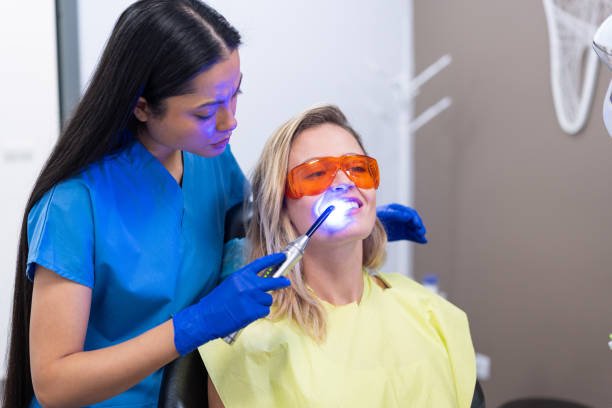Dental care has seen a revolution in recent years. With cutting-edge advancements, dentists can now provide faster, safer, and more effective treatments than ever before. Modern dental technology is not just about creating beautiful smiles—it also focuses on improving oral health outcomes for patients of all ages. From digital imaging to laser dentistry, these innovations are reshaping the future of oral care.
Table of Contents
ToggleThe Role of Technology in Diagnosis
Digital X-rays and Imaging
Gone are the days of traditional film-based X-rays. Today, digital X-rays provide a more detailed view of your teeth and gums. These images can be viewed instantly on a computer screen, helping dentists spot issues like cavities, gum disease, and misalignments with greater accuracy. Additionally, digital X-rays expose patients to significantly less radiation, making them a safer choice.
Intraoral Cameras
Intraoral cameras are another diagnostic tool making waves in dental care. These small, pen-shaped devices allow dentists to capture high-resolution images of hard-to-see areas inside your mouth. Patients can also see these images, which helps them better understand their oral health and the treatments being recommended.
Advancements in Treatment
Laser Dentistry
Laser technology is transforming the way dentists approach various procedures. Lasers are used for gum reshaping, cavity removal, and even treating oral infections. The precision of lasers means less damage to surrounding tissues, reduced pain, and faster healing times compared to traditional methods.
3D Printing in Dentistry
3D printing has opened new doors in custom dental solutions. Dentists use it to create crowns, bridges, dentures, and even orthodontic appliances like clear aligners. This technology allows for quick production and high accuracy, reducing the time patients spend waiting for their dental restorations.
CAD/CAM Technology
Computer-aided design and manufacturing (CAD/CAM) systems are revolutionising dental restorations. With this technology, dentists can design and fabricate crowns, veneers, and other dental prosthetics in a single visit. This not only saves time but also improves the precision and fit of the final product.
Comfort and Efficiency in Dentistry
Sedation Dentistry
For patients who experience anxiety during dental visits, sedation options have become more advanced and widely available. Techniques like nitrous oxide and oral sedation provide a relaxed experience, making even complex procedures more manageable.
Electric Handpieces
Traditional dental drills are being replaced with electric handpieces. These tools are quieter and more precise, offering patients a less stressful experience while improving the dentist’s ability to perform detailed work.
Enhancing Preventative Care
AI in Dental Care
Artificial intelligence (AI) is playing a growing role in preventative dentistry. AI-powered systems can analyse dental records and X-rays to predict potential problems before they become serious. This proactive approach helps patients avoid costly and invasive treatments.
Smart Toothbrushes
Technology has even extended to home care with the development of smart toothbrushes. These devices track brushing habits, provide feedback through smartphone apps, and encourage better oral hygiene practices. Some models even alert users to missed spots or incorrect brushing techniques.
Cutting-Edge Orthodontics
Clear Aligners
Clear aligners have revolutionised orthodontics. Unlike traditional braces, they are nearly invisible and can be removed for eating and brushing. Advances in scanning and 3D printing have made these aligners more precise and comfortable for patients.
Self-Ligating Braces
Another advancement in orthodontics is self-ligating braces, which use a sliding mechanism instead of elastic bands to hold the wires. This results in shorter treatment times, fewer adjustments, and improved comfort for the wearer.
Improving Patient Experience
Virtual Consultations
Virtual consultations have become a game-changer for busy patients. Using secure video platforms, dentists can discuss treatment options, review X-rays, and even provide follow-up care. This convenience has made dental care more accessible to people with hectic schedules.
Digital Patient Records
The shift to digital patient records has streamlined the dental care process. Dentists can easily access a patient’s history, X-rays, and treatment plans, leading to better coordination of care and fewer errors.
The Future of Dental Technology
Teledentistry
Teledentistry is expanding access to oral healthcare, particularly in remote areas. With the help of cameras and diagnostic tools, patients can consult with dentists without leaving their homes. This is especially useful for routine check-ups and initial assessments.
Regenerative Dentistry
Regenerative dentistry is an emerging field focused on using stem cells to regrow damaged tissues, including enamel and dentin. While still in its early stages, this technology has the potential to completely transform how dental conditions are treated in the future.
Conclusion
Modern dental technology is shaping the future of oral health in incredible ways. From advanced diagnostic tools to innovative treatment options, these advancements are making dental care more efficient, comfortable, and accessible for everyone. Whether it’s a simple check-up or a complex procedure, technology is helping dentists deliver better results while improving the overall patient experience. Staying informed about these innovations ensures that you can make the best choices for your oral health and enjoy a healthier, brighter smile.







